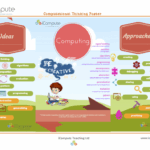The Power of Inclusivity: Embracing Diversity and Unity
Inclusivity is a powerful force that has the ability to transform communities, workplaces, and societies. It is the practice of creating environments where all individuals feel valued, respected, and supported regardless of their differences.
Embracing inclusivity means celebrating diversity in all its forms – whether it be race, ethnicity, gender, sexual orientation, religion, or abilities. It involves recognizing the unique perspectives and experiences that each person brings to the table and understanding that these differences enrich our collective tapestry.
When we prioritize inclusivity, we create spaces where everyone can thrive. By fostering a culture of acceptance and understanding, we break down barriers that divide us and build bridges that connect us. Inclusive environments empower individuals to be their authentic selves without fear of judgment or discrimination.
Furthermore, inclusivity leads to innovation and creativity. When people from diverse backgrounds come together, they bring a range of ideas, skills, and insights that can spark new solutions to complex problems. By embracing inclusivity, we open ourselves up to endless possibilities for growth and progress.
At its core, inclusivity is about unity. It is about recognizing our shared humanity and working together to create a world where everyone has equal opportunities to thrive. When we embrace inclusivity, we pave the way for a more just, equitable, and compassionate society for all.
Let us strive to be champions of inclusivity in our communities – let us embrace diversity, celebrate uniqueness, and build a future where everyone feels seen, heard, and valued.
Five Key Benefits of Embracing Inclusivity: Celebrating Diversity and Fostering Stronger Communities
- Promotes diversity and celebrates unique perspectives.
- Creates a sense of belonging and acceptance for all individuals.
- Fosters innovation and creativity through different ideas and experiences.
- Builds stronger communities by breaking down barriers and fostering unity.
- Leads to increased empathy, understanding, and respect for others.
Seven Challenges of Implementing Inclusivity in Organizations: Resistance, Misunderstandings, and Beyond
- Resistance from individuals who are resistant to change
- Potential for misunderstandings due to diverse perspectives
- Challenges in accommodating a wide range of needs and preferences
- Possible conflicts arising from differing cultural norms and values
- Difficulty in maintaining inclusivity without unintentionally excluding certain groups
- Risk of tokenism or superficial efforts that do not address underlying issues
- Struggles in balancing inclusivity with efficiency and decision-making processes
Promotes diversity and celebrates unique perspectives.
Inclusivity promotes diversity and celebrates unique perspectives by creating a welcoming environment where individuals from different backgrounds feel valued and respected for their authentic selves. By embracing a wide range of experiences, ideas, and beliefs, inclusivity enriches our collective understanding and fosters a culture of acceptance that encourages everyone to contribute their distinct viewpoints to the conversation. Celebrating diversity not only enhances creativity and innovation but also strengthens bonds within communities, leading to a more vibrant and inclusive society where each person’s voice is heard and appreciated.
Creates a sense of belonging and acceptance for all individuals.
Inclusivity has the remarkable ability to cultivate a profound sense of belonging and acceptance for all individuals. By embracing diversity and honoring the unique identities of each person, inclusivity creates an environment where everyone feels valued, respected, and welcomed. This sense of belonging fosters a deep connection among community members, empowering them to be their authentic selves without fear of judgment or exclusion. Inclusivity not only celebrates individual differences but also unites people in a shared understanding that everyone deserves to feel accepted and appreciated for who they are.
Fosters innovation and creativity through different ideas and experiences.
Inclusivity fosters innovation and creativity by bringing together individuals with diverse ideas and experiences. When people from different backgrounds collaborate, they bring a variety of perspectives to the table, sparking creativity and leading to innovative solutions. By embracing inclusivity, organizations and communities can tap into a wealth of unique insights and talents, driving progress and growth in ways that would not be possible in a more homogenous environment.
Builds stronger communities by breaking down barriers and fostering unity.
Inclusivity builds stronger communities by breaking down barriers that divide us and fostering unity among individuals from diverse backgrounds. When we embrace inclusivity, we create spaces where everyone feels valued and respected, regardless of their differences. By promoting understanding and acceptance, inclusivity allows people to come together, share their experiences, and work towards common goals. This sense of unity strengthens the bonds within a community, leading to collaboration, empathy, and a shared commitment to creating a more inclusive and harmonious society.
Leads to increased empathy, understanding, and respect for others.
Inclusivity leads to increased empathy, understanding, and respect for others by encouraging individuals to actively listen to diverse perspectives, engage in meaningful conversations, and cultivate a deeper appreciation for the experiences of those different from themselves. When people feel included and valued, they are more likely to empathize with others’ struggles, understand varying viewpoints, and respect the unique identities and backgrounds of their peers. This heightened sense of empathy and understanding fosters stronger connections, promotes mutual respect, and ultimately builds a more compassionate and harmonious society where everyone feels acknowledged and accepted.
Resistance from individuals who are resistant to change
One significant challenge of promoting inclusivity is the resistance from individuals who are hesitant or unwilling to embrace change. Some people may feel comfortable with the status quo and view efforts towards inclusivity as threatening or unnecessary. This resistance can stem from fear of the unknown, reluctance to step out of their comfort zone, or a lack of understanding about the benefits of diversity and inclusion. Overcoming this con requires patience, education, and fostering open dialogue to help individuals see the value and positive impact of inclusivity on both personal and collective levels.
Potential for misunderstandings due to diverse perspectives
One potential con of inclusivity is the increased likelihood of misunderstandings arising from diverse perspectives. When individuals from different backgrounds, cultures, and experiences come together, there is a greater chance for miscommunication and misinterpretation to occur. Varied viewpoints can lead to conflicting opinions, values, and expectations, which may result in challenges in finding common ground or reaching consensus. Navigating these differences requires patience, empathy, and effective communication skills to ensure that diverse perspectives are respected and understood within an inclusive environment.
Challenges in accommodating a wide range of needs and preferences
One significant challenge of inclusivity is the difficulty in accommodating a wide range of needs and preferences within a diverse group. While the goal of inclusivity is to create an environment where everyone feels welcome and valued, it can be challenging to address the varying requirements and preferences of individuals with different backgrounds, abilities, and experiences. Balancing these diverse needs while ensuring that no one feels marginalized or overlooked requires careful consideration, communication, and flexibility. Failure to effectively accommodate this wide range of needs and preferences can hinder the genuine sense of inclusion that is essential for a truly diverse and harmonious community.
Possible conflicts arising from differing cultural norms and values
One potential con of inclusivity is the possibility of conflicts arising from differing cultural norms and values. When individuals from diverse backgrounds come together, their varying beliefs, customs, and traditions may clash, leading to misunderstandings and tensions. It can be challenging to navigate these differences and find common ground, especially when deeply held cultural values are involved. Respecting diversity while managing conflicting norms requires open communication, empathy, and a willingness to learn from one another to foster mutual understanding and harmony in inclusive environments.
Difficulty in maintaining inclusivity without unintentionally excluding certain groups
One challenge of inclusivity is the difficulty in maintaining it without unintentionally excluding certain groups. While the goal of inclusivity is to create environments where everyone feels welcome and valued, there can be instances where efforts to include one group inadvertently lead to the exclusion of another. This delicate balance requires ongoing awareness, sensitivity, and proactive measures to ensure that all individuals are considered and respected. It is important to recognize that true inclusivity means actively seeking out and addressing any barriers or biases that may inadvertently marginalize certain groups, in order to create a truly inclusive and welcoming space for all.
Risk of tokenism or superficial efforts that do not address underlying issues
One significant con of inclusivity is the risk of tokenism or superficial efforts that fail to address underlying issues. When inclusivity is approached merely as a checkbox to be ticked off or a surface-level initiative to showcase diversity without genuine commitment, it can lead to token representation and shallow gestures that do not bring about meaningful change. This can create a false sense of progress while neglecting the deeper systemic issues that perpetuate inequality and exclusion. True inclusivity requires authentic engagement, sustained action, and a willingness to confront and dismantle the root causes of discrimination and marginalization.
Struggles in balancing inclusivity with efficiency and decision-making processes
One significant challenge of prioritizing inclusivity is the struggle to balance it with efficiency and decision-making processes. While inclusivity aims to involve diverse perspectives and ensure fair representation, the need to consider multiple viewpoints can sometimes slow down decision-making processes and hinder efficiency. In situations where quick and decisive actions are required, the emphasis on inclusivity may create tensions between accommodating diverse voices and achieving timely outcomes. Finding the right balance between inclusivity and efficiency is crucial to navigating this con effectively while still upholding the values of diversity and fairness.





Leave a Reply